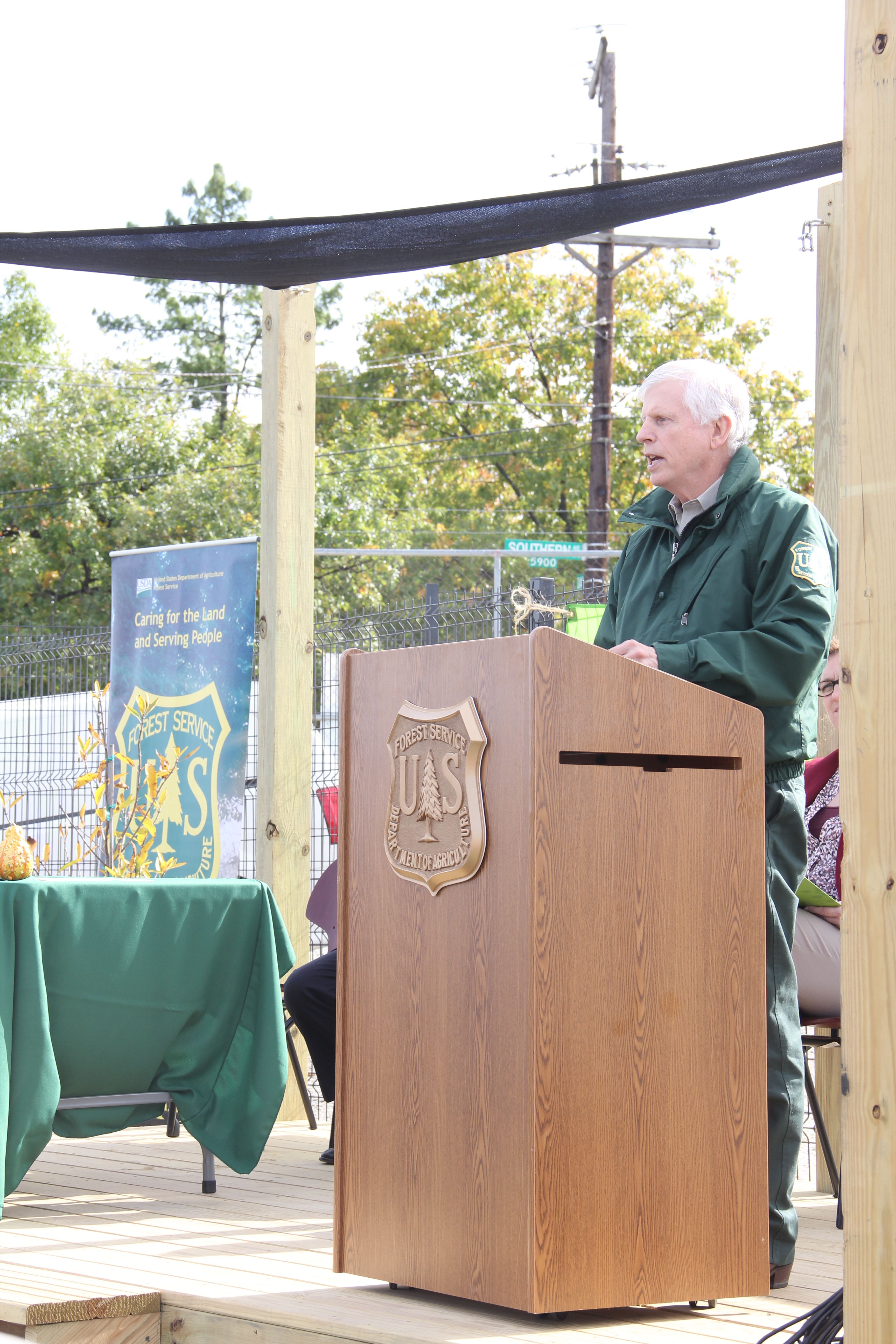On Monday, October 26, 2015, American Forests hosted a ceremonial tree planting at the East Capitol Urban Farm in honor of its 140th anniversary and to recognize the signing of a new MOU with the U.S. Forest Service. During the ceremony, U.S. Forest Service Chief Tom Tidwell gave the following remarks:
“Good afternoon! It’s a pleasure to be here. My thanks to our partners in the East Capitol Urban Farm and to American Forests for hosting this event. The Forest Service is honored to be part of the East Capitol Urban Farm through our participation in the Urban Waters Federal Partnership.
In honor of the longstanding partnership between the Forest Service and American Forests, we are here this afternoon to plant a tree. We are also here to sign a memorandum of understanding to help us map out the future of our partnership.
Thank you, Scott, for your thoughtful remarks about how we have worked together over so many decades to protect and restore America’s forests for the benefit of present and future generations.
I was struck by the theme of your remarks: that it’s not either/or — it’s both. It’s not either progress or nature … not either jobs or the environment … not either gray infrastructure or green. These are false dichotomies.
In the remainder of my remarks, I will take up the same theme with respect to partnerships and collaboration. This is part of what we are here to celebrate today.
As you know, our nation was founded on the principles of individual liberty and the pursuit of happiness. Those principles are enshrined in our constitution, our laws, and our culture. You will find them in the writings of great conservationist visionaries like Gifford Pinchot … like President Theodore Roosevelt.
Before conservation was born, however, industrial interests insisted that government had no place in protecting our nation’s natural heritage … in conserving the great forests of our nation. In 1907, a leader in Congress, Joe Cannon of Illinois, put it this way: “Not one damn cent for scenery!”
That set the stage for a false dichotomy that has dogged us to this day. The dichotomy is that it’s either government or the private sector … either a command model or the profit motive … either top-down or bottom-up management … when, in fact, we need multiple partners and perspectives to ensure the future of our forests.
We here today can attest to that. The United States is a model of mixed forest ownership that is relatively rare around the world. We have vast areas of privately owned forests, mostly family-owned. But we also have tribal forests. And we have state forests … county parks and greenways … urban and community forests … and, of course, federal forests, including the national forests. And we all work together across these mixed landscapes through partnerships and collaboration.
The East Capitol Urban Farm is a good example. Some partners come from the private sector, like American Forests. Others come from research and academia, like the University of the District of Columbia. Still others come from community groups and from the public sector, like the Forest Service.
And, as Scott explained, the Forest Service and American Forests have a long history of working together. For more than 110 years, our two organizations have worked together replanting after fires, restoring wildlife habitat, and protecting threatened forest types such as whitebark pine and longleaf pine. In just the last 25 years, we have planted more than 20 million trees. We have restored more than 85,000 acres in our national forests. That’s 133 square miles!
Urban trees are the hardest working trees because they serve so many people and purposes. After all, more than 80 percent of Americans live, work, and play in our metropolitan areas, surrounded by their urban and community forests. When you put people in a forested environment, their blood pressure and heart rate go down. Surrounded by trees, people think better and feel better. Kids do better in school, adults do better at work, and people recover faster from sickness.
That is why the East Capitol Urban Farm is a special place. It is a community partnership that will benefit this city and its urban watershed.
So I am pleased to announce that we are adding another tree to the landscape. It’s a scarlet oak, the official tree of Washington, DC.
The scarlet oak is one of the most beautiful trees in any season, but its rich red fall foliage is a marvel to behold. Many different kinds of wildlife use this tree … for acorns and more. It will also add shade, reduce storm water runoff, and stabilize the soil.
So … in a nutshell … it’s never either/or — it’s about all of us working together across shared landscapes, both private and public, to ensure that Americans will continue to get all the benefits they want and need from their forests, for generations to come.”
